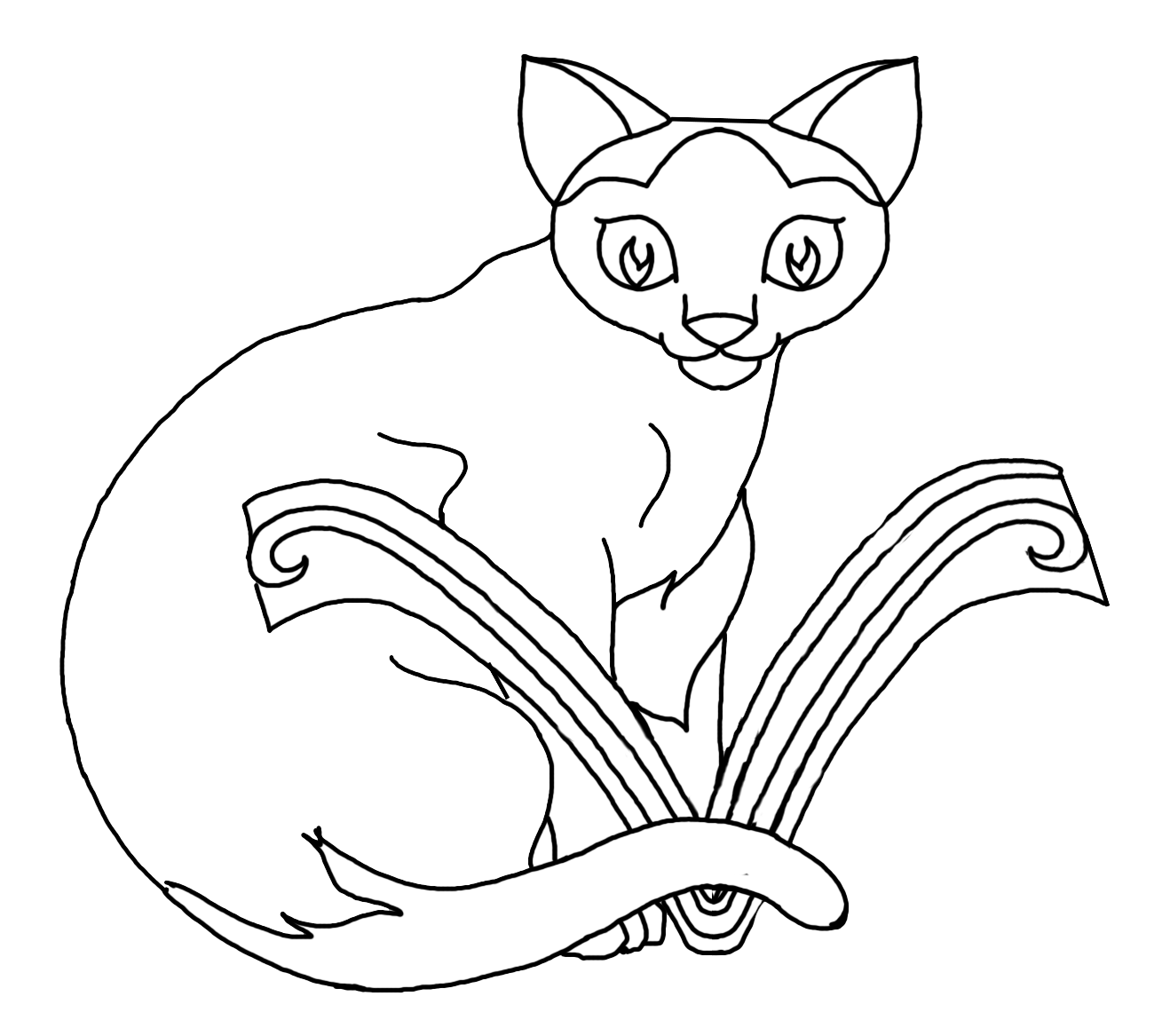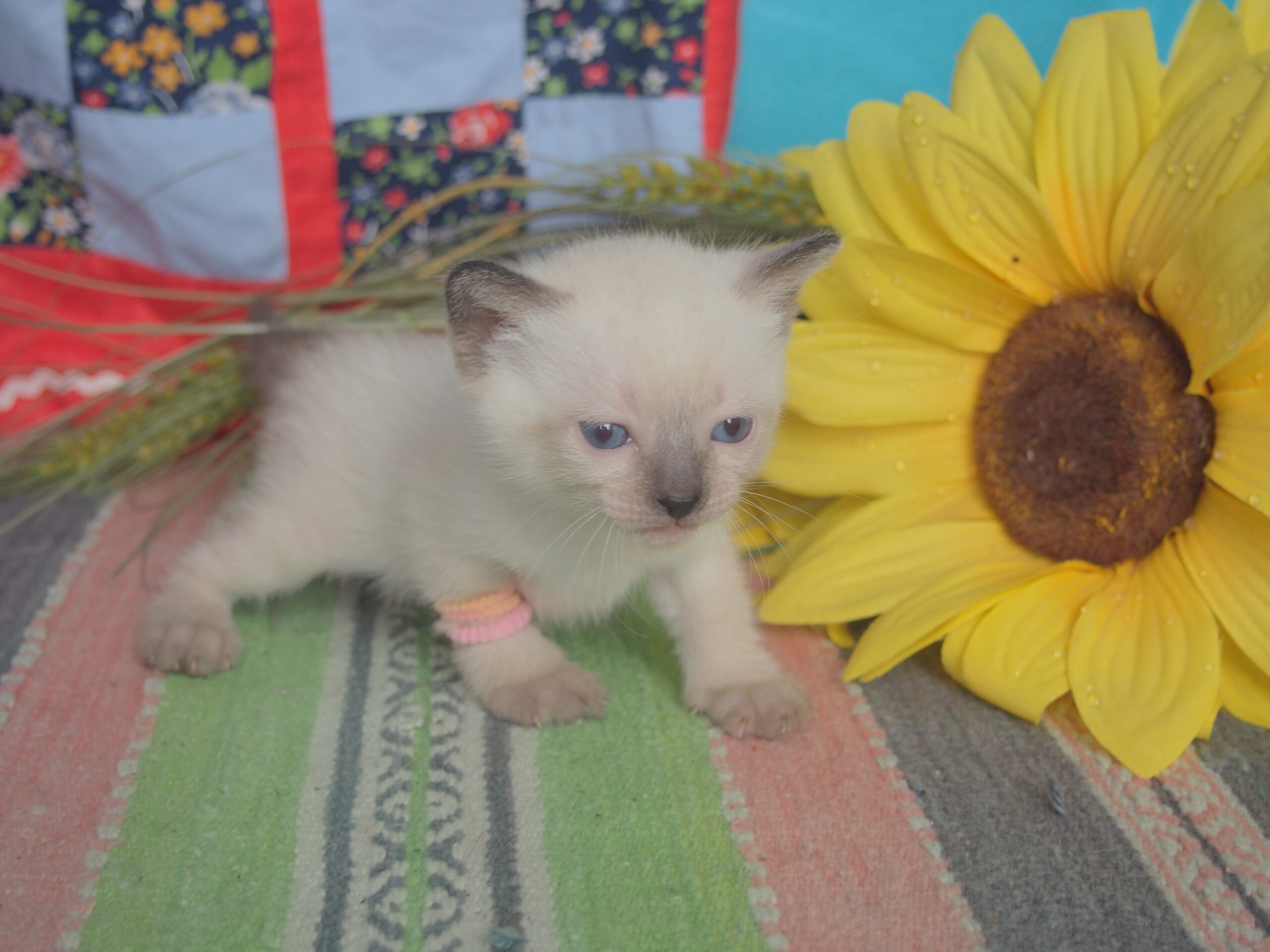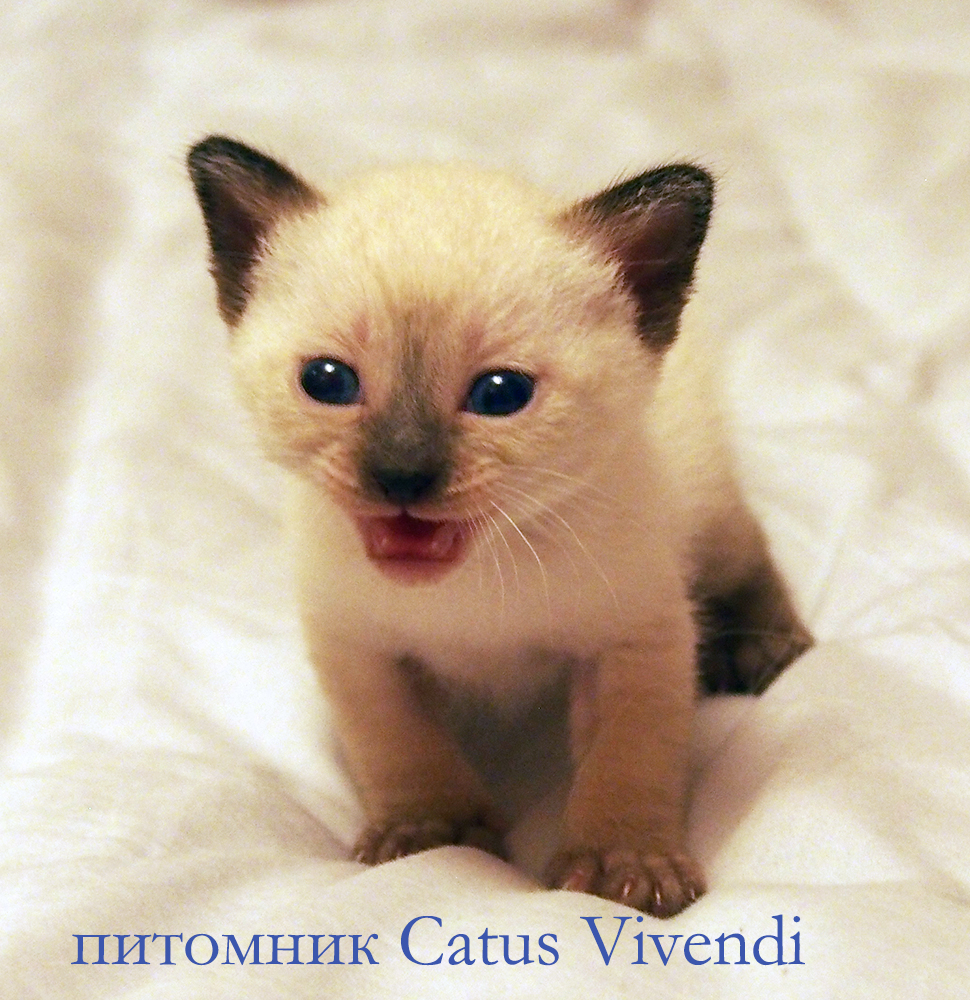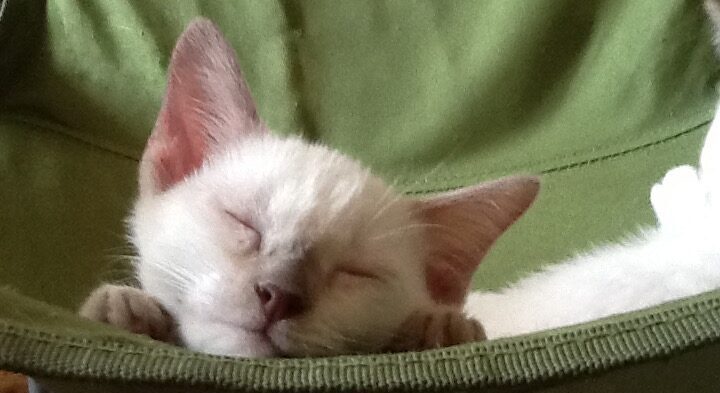Creature Companion 2017; May: 40-41.
Anton C. Beynen
Milk for cats
During the suckling period, kittens are entirely dependent on the queen’s milk. In the absence of a lactating foster queen, orphaned kittens may be hand reared using an appropriate milk replacer. Milk provides nutrients, including lactose, or milk sugar. The kittens’ intestine produces lactase, the enzyme that digests lactose, but the capacity falls from birth to weaning.
Many cats love to lap up cow milk, but it is generally considered bad practice: lactose in dairy products is indigestible and degraded by gut bacteria, leading to diarrhea. This one-sided look at lactose intolerance paved the way for lactase-treated, hence lactose-free, cat milk. At the same time, the marketplace offers some dry cat foods featuring lactose-containing milk powder. In those foods, lactose is simply one of the common indigestible, fermentable carbohydrates present at harmless or beneficial concentrations.
Research data indicate that adult cats can ingest 6 g of lactose per day without problems, whereas 10 and 16 g cause intermittent and continuous diarrhea. Six g of lactose corresponds with 130 ml of cow milk. Making allowance for individual sensitivity, 85 ml can be seen as the maximum daily intake not provoking lactose-mediated diarrhea. This amount must be combined with a base diet that is nutritionally complete. For a 4-kg cat, commercial food and 85 ml milk, providing 77 and 23% of its daily calorie requirement, form an adequate ration (1, 2).
Food allergy causes skin disorders (itching, self-mutilation) and/or gut problems (vomiting, flatulence, diarrhea). The risk of milk allergy is very small in cats. In cats, the occurrence of all food-allergic reactions is not more common than in dogs, and would be affecting less than 0.05% of the cat population (3), with dairy products accounting for less than 0.01% (4).
Milk appetite
It is common knowledge that most well-fed cats enjoy milk. The liking for milk might concern a preserved mechanism that ensured acceptance of queen’s milk through palatability of the lactose and/or butterfat constituents. Compared with the solvents alone, cats preferred dilute milk with added lactose and emulsifier-enhanced water with added butterfat (5).
Milk appetite may reflect a conditioned taste preference. Milk drinking in cats is accompanied by electroencephalographic activity indicative of diminished arousal (6-8). That response was also seen in cats with broth intake, but not during water drinking (7). Alpha-casozepine, a hydrolysis product of casein from milk, may be anxiolytic, but there is no solid evidence that it reduces stress in cats (9).
Cats’ desire for milk is illustrated by the use of milk rewards in some task performance studies (10, 11). Out of 23 foods, only dairy cream and nonfat, evaporated milk masked the distaste of bakers’ paste colorings (12). In a two-choice test (5), adult cats strongly preferred whole, homogenized, vitamin D fortified milk to the dilute product (20% whole milk, 80% deionized water).
Lactose
The disaccharide lactose consists of glucose and galactose joined by a ß-(1,4)-glycosidic linkage. Lactase activity in small intestinal mucosa was high in newborn kittens, but group-mean values in kittens aged 6-12 weeks and adult cats were about 90% lower (13). Lactose feeding (16 g/MJ metabolizable energy) did not affect lactase activity in adult cats, while some individuals had high intrinsic activity (13).
Lactose (6, 10 or 16 g/MJ) in carbohydrate-free diets had an apparent, total intestinal tract digestibility of almost 100% (14, 15), but lowered fecal pH (15), pointing at extensive fermentation in the hindgut. Dietary lactose (6 g/MJ) did not influence postprandrial glucose, but brought some lactose, glucose and galactose in urine (16), urinary galactose excretion equaling about 0.4% of intake (17).
Cats fed 10 g lactose/MJ had at times diarrhea (14) while 16 g lactose/MJ induced continuous diarrhea (15). Lactose intake at 6 g/MJ did not harm feces quality and allowed appropriate fecal dry matter content (15, 17). For a 4-kg cat, 6 g lactose/MJ corresponds to an intake of 130 ml milk/day or 35% of total calories from whole milk.
Milk powder
Whole milk powder is obtained by removing water from pasteurized, homogenized, whole milk through evaporation and spray drying processes. In 1962, the US National Academies (18) qualified two formulas as successful stock diets for growing and/or reproducing cats. The diets, apparently not inducing diarrhea, contain about 40 energy% dried whole milk (19, 20), or 7 g lactose/MJ.
Processed milk
In the 1930s, Pottenger (21) fed cats on a diet consisting of two thirds raw milk, one third raw meat and some cod liver oil. The milk provided about 40 energy%. Other cats received either pasteurized, evaporated or sweetened condensed milk. Raw milk in the diet sustained health, but the other milks impaired reproduction and caused various disorders. Supporting data come from a contemporary rat study (22-24).
The description of the cat experiment in abstract form (21) lacks details, but suggests that the applied treatment of milk had generated toxicants and/or had destroyed nutrients, the latter without abatement by the raw meat ingredient. The impact of modern milk processing on feline reproduction and health is unknown.
All-milk diet
Feeding only unfortified, whole cow milk to cats may cause deficiencies of taurine, iron, zinc, manganese and copper. Skim milk also falls short of essential fatty acids and vitamins A and D.
Literature
- Beynen AC. Home-prepared pet foods. Creature Companion 2015; May: 52-53.
- Beynen AC. Zelfsamengesteld voer voor hond en kat – deel 1. Dier-en-Arts 2015; Nr 5: 178-181.
- Beynen AC. Hypoallergene voeders voor de hond. Dier-en-Arts 2016; Nr 11: 304-307.
- Verlinden A, Hesta M, Millet S, Janssens GPJ. Food allergy in dogs and cats: a review. Crit Rev Feed Sci Nutr 2006; 46: 259-273.
- Beauchamp GK, Maller O, Rogers Jr JG. Flavor preferences in cats (Felis catus and Panthera sp.). J Com Physiol Psychol 1977; 91: 1118-1127.
- Buchwald NA, Horvath FE, Wyers EJ, Wakefield C. Electroencephalogram rhythms correlated with mik reinforcement in cats. Nature 1964; 201: 830-831.
- Sterman MB, Wyrwicka W. EEG correlates of sleep: evidence for separate forebrain substrates. Brain Res 1967; 6: 143-163.
- Cervantes M, De la Torre L, Beyer C. Analysis of various factors involved in EEG synchronization during milk drinking in the cat. Brain Res 1975; 91: 89-98.
- Beynen AC. Therapeutic de-stressing foods for cats. Creature Companion 2016; May: 54-55.
- Gunther R. The absolute threshold for vision in the cat. J Physiol 1951; 114: 8-15.
- Schlag-Rey M, Lindsley DB. Effect of prefrontal lesions on trained anticipatory visual attending in cats. Physiol Behav 1970; 5: 1033-1041.
- Griffin B. The use of fecal markers to facilitate sample collection in group-housed cats. Contemporary Topics 2002; 41: 51-56.
- Kienzle E. Carbohydrate metabolism of the cat. 4. Activity of maltase, isomaltase, sucrase and lactase in the gastrointestinal tract in relation to age and diet. J Anim Physiol Anim Nutr 1993; 70: 89-96.
- Morris JG, Trudell J, Pencovic T. Carbohydrate digestion by the domestic cat (Felis cattus). Br J Nutr 1977; 37: 365-373.
- Kienzle E. Carbohydrate metabolism of the cat. 3. Digestion of sugars. J Anim Physiol Anim Nutr 1993; 69: 203-210.
- Kienzle E. Blood sugar levels and renal sugar excretion after the intake of high carbohydrate diets in cats. J Nutr 1994; 124: 2563S-2567S.
- Beynen AC, Yu S. Magnesium balance in adult cats fed a dry food rich in lactose. J Anim Physiol Anim Nutr 2003; 87: 245-250.
- Nutrient requirements of domestic animals. Number X. Nutrient requirements of laboratory animals. National Academy of Sciences — National Research Council, Publication 990, 1962.
- Da Silva AC. The domestic cat as a laboratory animal for experimental nutrition studies. I. General considerations, care and feeding of animals. Acta Physiol Latinoamericana 1950; 1: 20-25.
- Dickinson CD, Scott PP. Nutrition of the cat. 1. A practical stock diet supporting growth and reproduction. Br J Nutr 1956; 10: 304-311.
- Pottenger’s cats – A study in nutrition. Price-Pottenger Nutrition Foundation (Pottenger E, Pottenger Jr RT, eds), Lemon Grove CA, 1983, pp 15-17.
- Mattick ECV, Golding J. Relative value of raw and heated milk in nutrition. Lancet 1931; 217: 662667.
- Mattick ECV, Golding J. Relative value of raw and heated milk in nutrition. Lancet 1936; 227: 1132-1134.
- Mattick ECV, Golding J. Relative value of raw and heated milk in nutrition. Part II. Lancet 1936; 228: 702-706.





